#nematodes
Text
UC Riverside scientists have discovered a tiny worm species that infects and kills insects. These worms, called nematodes, could control crop pests in warm, humid places where other beneficial nematodes are currently unable to thrive.
This new species is a member of a family of nematodes called Steinernema that have long been used in agriculture to control insect parasites without pesticides. Steinernema are not harmful to humans or other mammals and were first discovered in the 1920s.
Continue Reading.
230 notes
·
View notes
Text
Taxonomy Tournament: Nematode Finale!
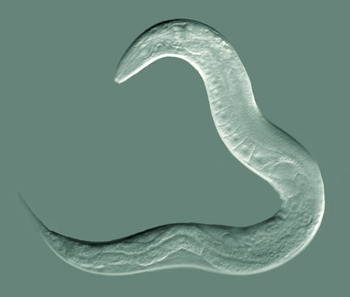

C. elegans. This nematode species is commonly used as a model organism, being the first multi-cellular organism to have its genome sequenced and neural connections mapped
Dracunculus medinensis. This nematode is among the longest nematode parasites in humans, at up to 80 cm. They burst out of their host's foot, and are on target to be the second infectious disease to be eradicated, after smallpox. Possibly the ''snake'' depicted on the Rod of Asclepius (symbol of medicine)
#animals#biology#polls#poll tournament#zoology#nematodes#worms#ecdytes#Human parasite#C. elegans#Dracunculus medinensis#0x15v0x6a
35 notes
·
View notes
Text
youtube
Watch the American Climate Leadership Awards 2024 now: https://youtu.be/bWiW4Rp8vF0?feature=shared
The American Climate Leadership Awards 2024 broadcast recording is now available on ecoAmerica's YouTube channel for viewers to be inspired by active climate leaders. Watch to find out which finalist received the $50,000 grand prize! Hosted by Vanessa Hauc and featuring Bill McKibben and Katharine Hayhoe!
#ACLA24#ACLA24Leaders#youtube#youtube video#climate leaders#climate solutions#climate action#climate and environment#climate#climate change#climate and health#climate blog#climate justice#climate news#weather and climate#environmental news#environment#environmental awareness#environment and health#environmental#environmental issues#environmental justice#environment protection#environmental health#Youtube
2K notes
·
View notes
Text
February 11th, 2024

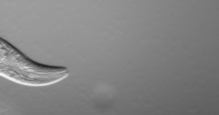
The Worm (Caenorhabiditis elegans)
Distribution: Found in temperate regions worldwide.
Habitat: Terrestrial; lives in humid soils with moderate oxygen contents and low-to-medium clay contents.
Diet: Microbivorous; feed on bacteria that lives in soil and on rotting vegetation, but can also feed on various species of yeast.
Description: C. elegans is aptly nicknamed "the worm" because it is a very common laboratory model; in fact, it's used as the model organism for all eukaryotic organisms! These worms are very easy to study due to the transparency of their body, as well as their limited number of cells, having only 131 cells in their entire bodies. They were the first multicellular organisms to have their entire genome sequenced (as they only have 6 chromosomes and approximately 20,000 genes). Common research on these worms include the processes of embryogenesis, development, disease and aging (especially in the form of programmed cell death). By understanding how their genes are involved in the aging process, we can hopefully have a better idea of the processes involved in human aging, too!
Most of these worms are self-fertilizing hermaphrodites, though males are also present (composing only about 1/1000 worms). Though their anatomy is quite simple, they do possess a simple brain and nervous system (one third of their cells are neurons). They're also capable of rudimentary learning, as well as using chemoreceptors to orient themselves, and respond minimally to light (living in dark environments, they don't have much need for good eyesight).
Image by K. Bradnam and gif by Bob Goldstein.
33 notes
·
View notes
Text
Your Ants
There are 2.5 million ants per person. I like to think specific colonies are assigned to each of us. Your *particular* ants.
Perhaps you have been assigned just three massive colonies of leaf cutters. Perhaps you are assigned 10,000s of tiny colonies of many different species each with dozens to 100s of ants.
But, what is more remarkable is that *each* of your assigned ants has to her (or occasionally him) assigned about 22,800 nematodes.
How do the little girls keep track of them all?
#nematode#nematodes#ants#ants per person#ant facts#your ants#antblr#ant posting#worm posting#round worms#ants per worm#world of ants#planet of the ants
35 notes
·
View notes
Text

I can’t believe I haven’t seen anything about this yet
Here’s a source
#science#animals#stem student#stemblr#studyblr#nematodes#wormblr#supernatural meme#news#scientist#what the fuuuuuuuuck#what the fuck#what the actual fuuuuuck#what the hell#that’s not gonna end well
54 notes
·
View notes
Photo

(via Carnivorous oyster mushrooms can kill roundworms with “nerve gas in a lollipop” | Ars Technica)
The oyster mushroom (Pleurotus ostreatus) is a staple of many kinds of cuisine, prized for its mild flavors and a scent vaguely hinting at anise. These cream-colored mushrooms are also one of several types of carnivorous fungi that prey on nematodes (roundworms) in particular. The mushrooms have evolved a novel mechanism for paralyzing and killing its nematode prey: a toxin contained within lollipop-like structures called toxocysts that, when emitted, cause widespread cell death in roundworms within minutes. Scientists have now identified the specific volatile organic compound responsible for this effect, according to a new paper published in the journal Science Advances.
113 notes
·
View notes
Text
Scientists have reported thawing worms recovered from 46,000-year-old Siberian permafrost and bringing them back to life. But there are some sceptics.
23 notes
·
View notes
Text
anyway
FEMALE ROOT KNOT NEMATODE JUMPSCARE

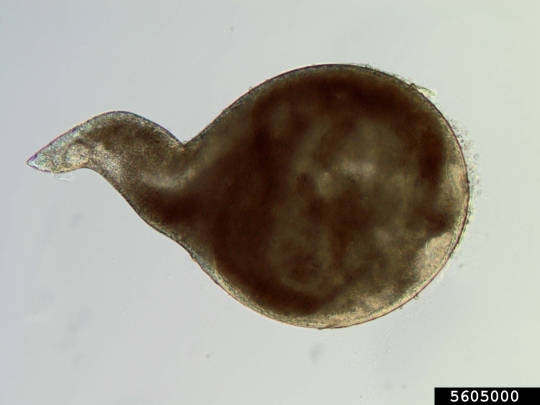

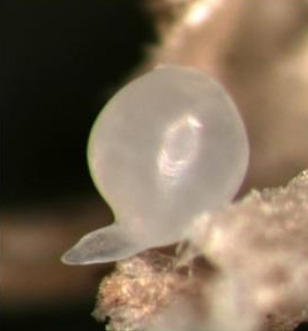
ba l
7 notes
·
View notes
Text
heads shoulders nematodes nematodes
3 notes
·
View notes
Text

Three new handmade holographic sticker packs!
(ノ◕ヮ◕)ノ*:・゚✧
Split Hares
#split hares#stickers#handmade#worms#planarians#nematodes#earthworms#hammerhead worms#chicks#birds#clowns#clowncore#animals#critters#queer artists
11 notes
·
View notes
Text

2 notes
·
View notes
Text
When you're a tiny nematode, electrical fields are positively uplifting. Literally.
The most famous nematode of all – Caenorhabditis elegans – has been caught using electrical fields to its advantage. The tiny worm can somehow piggyback on electrical fields to jump a surprising distance, across a petri dish, for example, or onto the back of a bumblebee for a ride to a new locale.
It's not entirely clear how the nematodes do this, but thanks to an experiment led by biologist Takuya Chiba of Hokkaido University in Japan, it's now apparent that these tiny animals use electrical fields to disperse far afield into new habitats.
"Pollinators, such as insects and hummingbirds, are known to be electrically charged, and it is believed that pollen is attracted by the electric field formed by the pollinator and the plant," says biophysicist Takuma Sugi of Hiroshima University in Japan, co-senior author on the study.
Continue Reading
177 notes
·
View notes
Text
Taxonomy Tournament: Nematodes

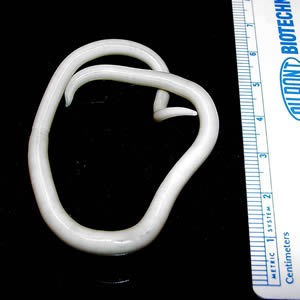
C. elegans. This nematode species is commonly used as a model organism, being the first multi-cellular organism to have its genome sequenced and neural connections mapped
Ascaris lumbricoides. This nematode is the most common parasitic worm of humans. It's estimated 1 in 6 humans have been infected with it at some point
#animals#biology#polls#poll tournament#zoology#nematodes#worms#ecdytes#Human parasite#C. elegans#Ascaris lumbricoides#0x15v0xea#Animal Tournament#Animal Tournament Round 1
18 notes
·
View notes
Text
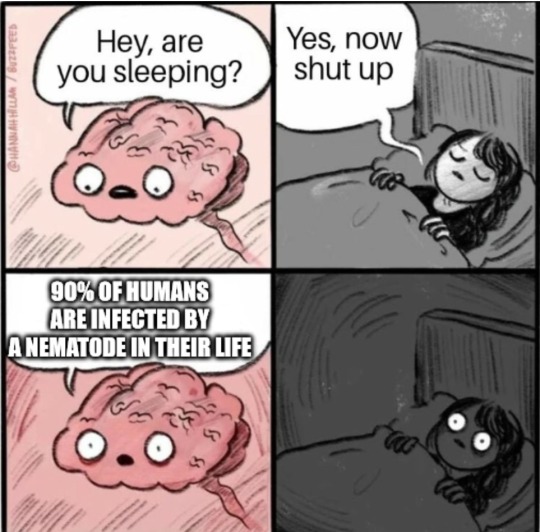
I learned this last week and now you all have to suffer with me while knowing this fact😀
nematodes = roundworms btw
5 notes
·
View notes
Text
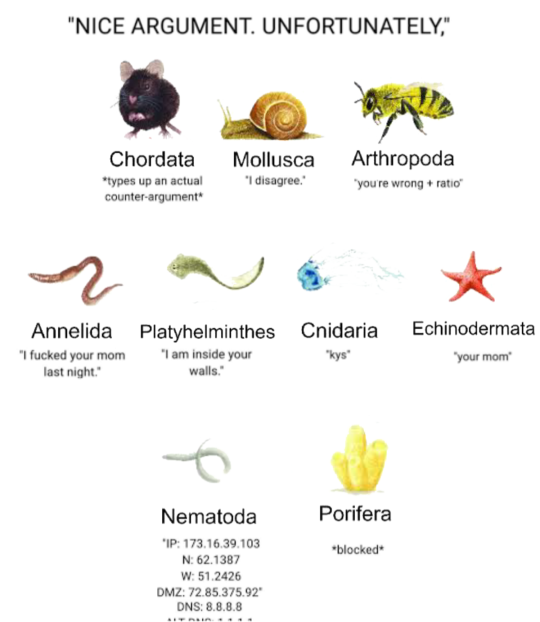
This is gonna be my most controversial post
#shitpost#zoology#biology#i know it's kinda chordatacentric#sorry#chordata#echinoderms#arthopods#nematodes#annelids#mollusks#platyhelminthes#cnidaria#porifera#animals#meme
127 notes
·
View notes